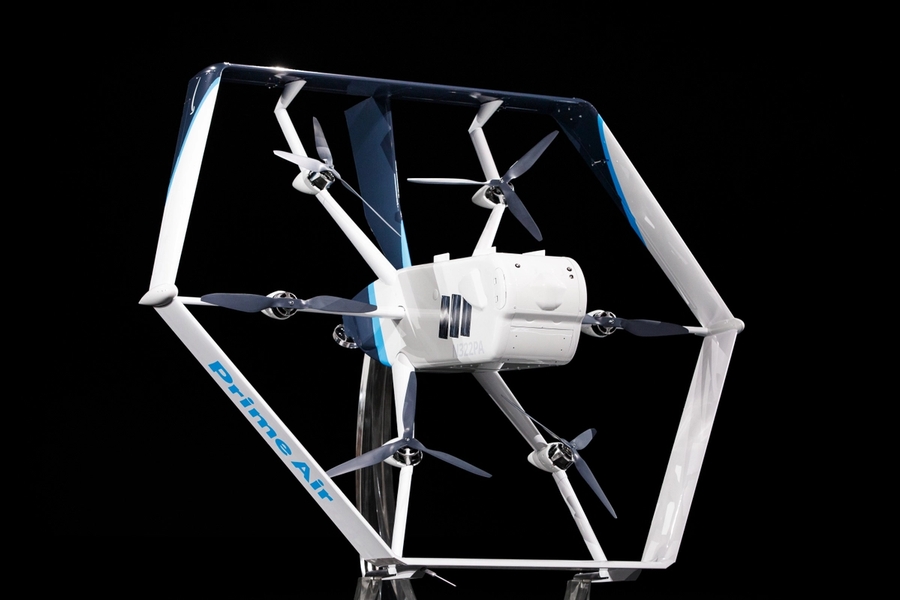Prime Air has completed a key step in its pre-flight checklist.
On Monday, the Federal Aviation Administration granted Amazon “air carrier” certification. In non-aviation administrator parlance: Amazon can begin commercial drone deliveries on a trial basis, as it works toward more formal certification in the U.S.
More about Prime Air (est. 2013)
Amazon wants to create an autonomous drone service that will deliver packages up to five pounds in 30 minutes or less. Company technologists are developing its aerial workhorse in-house.
Introduced last summer, the latest Prime Air drone is electric, autonomous, and capable of vertical and horizontal flight. It can travel up to 15 miles in half an hour, which makes it slightly faster than Usain Bolt and significantly more long-distance.
It’s not Day One for air carriers
Last April: The FAA gave air carrier certification to Wing, Alphabet’s drone subsidiary. Wing began deliveries in Christiansburg, VA, last year. More recently, Wing has signed on FedEx and Walgreens as pilot delivery partners in Virginia.
Last October: The FAA awarded a Part 135 certification to UPS Fast Forward, letting the parcel giant’s drone subsidiary operate a drone airline. The parcel giant could theoretically fly an unlimited number of drones. For now, it’s operating limited drone delivery services in North Carolina and Florida.
The common denominator?
Getting a drone delivery service off the ground is very difficult for a mess of regulatory and technical reasons.
Like any pilot, drone operators must adhere to a number of flight guidelines. Amazon has 28 explicit conditions for FAA approval: It can’t fly drones more than 400 feet above ground. It must operate in rural areas with low population densities. The list goes on.
- But Amazon, Wing, and UPS have beencleared for flights beyond the visual line of sight. That’s necessary if you want a drone to deliver farther than what a sidewalk bot could handle.
Bottom line: All three companies have momentum after clearing a major regulatory hurdle. But mind the hype factor. Drone-delivered Chipotle almost certainly isn’t coming to a doorstep near you soon.
Keep up with the innovative tech transforming business
Tech Brew keeps business leaders up-to-date on the latest innovations, automation advances, policy shifts, and more, so they can make informed decisions about tech.
